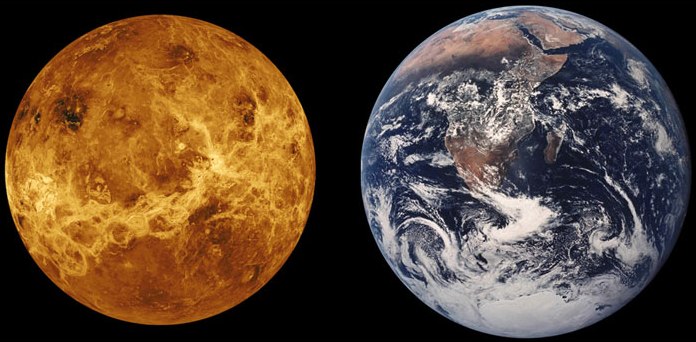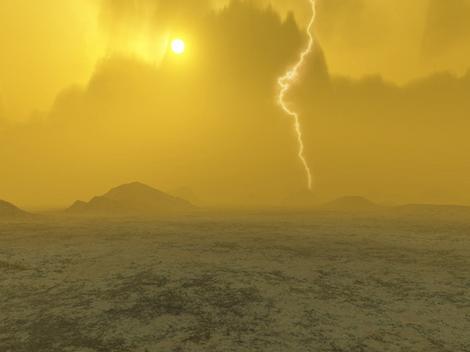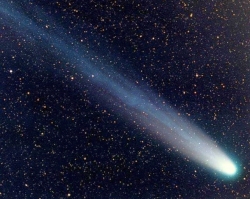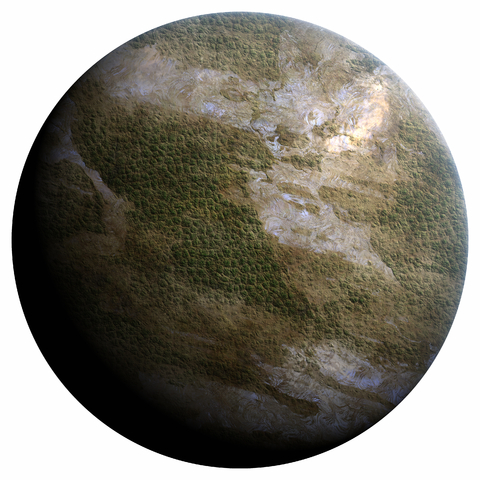It seems to me that Aubrey de Grey is not a big fan of one of the possible solutions to the spiraling population expansion of the human race. That solution is to move at least some of us to other planets. Admittedly, such ideas may look like total science fiction and up to now have usually been focused on Mars. Thus today there are considerable numbers of serious people interested in terraforming the red planet. University professors, intellectuals and adventurers support the colonization idea because a one-way trip to Mars would be probably half as expensive as a full round-trip mission. Thus, it is reasoned that Martian colonies should be set up there from the beginning. (Before colonizing Mars, however, we ought to fully utilize remote places such as Antarctica, Northern Canada, and Siberia, since those are much easier to begin with.)
Aubrey de Grey may be right in thinking that sending substantial number of humans into space is not a realistic idea for this century. Nevertheless it might not be as hard to start extraterrestrial colonies as some people think, especially if up to now we have been looking in the wrong direction. I propose that instead of Mars, we ought to consider the Earth’s Twin - Venus.
Venus is known as Earth’s twin for several good reasons: it is the closest of all planets to Earth; it has nearly the same mass and size and has a thick atmosphere. People talk a lot about terraforming Mars but the problem would be that there is nothing to make an atmosphere there out of. Venus, on the other hand, with its carbon dioxide atmosphere, even though it is both huge and hot because of its greenhouse gas effect, does give us something to work with. Thus, in terms of atmosphere forming, at least we don’t have to make something out of nothing.
The atmosphere of Venus is, composed chiefly of carbon dioxide, which generates a surface pressure 90 times greater than that on Earth. This massive blanket of carbon dioxide is also responsible for a runaway greenhouse effect that heats the planet’s surface to an average temperature of 467°C (872°F) – hot enough to melt lead. This would be a bit uncomfortable for even the most genetically enhanced humans (or cyborgs) to deal with, at least for the foreseeable future. However, some Earth organisms, known as hyperthermophiles, are able to deal with similarly incredible pressures and temperatures since they are able to live in temperatures above 80°C (176°F). The hardiest hyperthermophiles yet discovered live on the superheated walls of deep-sea hydrothermal vents, requiring temperatures of at least 90°C for survival. None have been found yet that can live in the temperatures and pressures similar to those on the surface of Venus but they probably do exist on Earth (or you could say ‘in’ Earth, well below the surface) and, at least theoretically, have not been discovered yet.
So if we did have creatures that could survive at the temperature of Venus what good are they? There is nothing to eat on Venus so they could not be used to convert the CO2 atmosphere to solid carbon and oxygen gas but would starve to death? Well that’s not really true because there are lots of sulfur eating bacteria that gorge on sulfur like Cookie Monsters. Sulfuric acid is available in vast quantities in the atmosphere and they can eat the sulfur, breathe in the carbon dioxide and breathe out oxygen.
Then we come to the next and perhaps the biggest problem that we would need a solution for. There is no water on Venus to speak off. I have pointed out how microbes can do all of the things that you need to do to. However all living things require water to survive and there is virtually no water on Venus. All the hydrogen from the formation of the planet has escaped into space and the only viable source would be redirecting comets to land on Venus every time they enter the solar system. This is certainly possible if the highly elliptical orbits of comets are modified when they are about as far away from the Sun as Neptune, but will take quite a few decades before it becomes practical and shows significant results.
Well, as Aubrey de Gray likes to point out when explaining Regenerative Medicine — humans (and all living things) are highly complex machines. With ultra advanced nanotechnology that will come a decade or two after the singularity, probably before 2050 it will be entirely possible to create microbe-like self-replicating robots that will be able to go to Venus, eat the sulfuric acid, breathe in the carbon dioxide and breathe out oxygen and carbon monoxide. The carbon monoxide that the nanobots will also be breathing out will eventually break down into CO2 again and can just be inhaled once more by these self-replicating artificial life forms. Thus we should have an Oxygen/Nitrogen Atmosphere in a couple of decades that is probably about 60 Earth atmospheres in pressure, but without any serious greenhouse problems. This would still be a very uncomfortable (though not fatal) atmosphere for a normal human. It will also be very hot and perhaps highly radio-active because Venus has no significant magnetic field with which to deflect the rays from the occasional solar eruptions as the Earth does. However, if as Ray Kurzweil often points out, humans will be able to transcend biology and merge with machines then it might be eventually possible for a human to walk around without any protective space suit (or even naked) on the surface of the Moon (or Venus, or Mars) if he or she is designed with a “heavy duty body.”
So there you have it, if you can put all or some of these theoretically possible solutions together into one coherent space program, then by the end of the 21st century humankind can have a second Earth to move to and provide us with a second home thereby alleviating population growth on Earth. At first, water for the Venus colonies would have to be shipped from Earth or the Moon, and then eventually - made from comets. By then, human resource efficiency will be extremely good since by necessity it will be vital for survival on Earth. Thus a closed-loop fully recycling habitat would not be that hard to create.
Life on Venus may have its funny peculiarities such as a day that is 116.75 Earth days long or almost exactly 1401 hours. Since 1400 or 1200 are nice round numbers the Venusian hour might be 2.57 or 3 seconds longer then an Earth hour. There may not be a cloud in the sky for a long time and a pronounced heat haze and mirages may be the norm. Flammable materials on Earth will likely become explosive in Venus’ thick oxygen atmosphere.There might be a risk of spontaneous human combustion. The Sun will look bigger. There will be no moon at night ever though many stars with very pronounced twinkling…
Apart from those and other oddities Venus is probably going to be a lovely place to live in. Wonderful mountains and valleys to travel around as a tourist and more solar power then you could ever use to charge every single device from electric cars and high speed trains to super efficient airliners and even artificial planetary or local magnetic fields. In my view, the best way to make terraforming Venus a reality would be through a multinational corporation set up by most or all of the Earth nations. The biggest problem that the project needs to overcome, both for the self replicating nanobots and later the colonists, would be water shortage. But I believe that this is not an insurmountable problem. In all likelihood, there will be other problems that I have not thought of or mentioned here so feel free to contribute to this idea.
So, what do you think? Can terraforming Venus be the solution to population growth on Earth?
About the Author:
Kieran Griffith is an adviser to the SENS Foundation for Advancing Rejuvenation Biotechnologies on space colonization. He has degrees in Space Science from Embry-Riddle Aeronautical University and the International Space University and is interested in a career in Commercial Spaceflight.
Related articles
- Sulfur dioxide in Venus’ atmosphere could be key to fighting global warming on Earth (physorg.com)
- Should We Use Comets and Asteroids to Terraform Mars? (bigthink.com)
- Terraforming [Oscillator] (scienceblogs.com)
- How Microbes Could Help Colonize Mars (space.com)

















 Singularity Weblog is a journal of Nikola Danaylov's thoughts on trends, news, issues and people related to the
Singularity Weblog is a journal of Nikola Danaylov's thoughts on trends, news, issues and people related to the 
